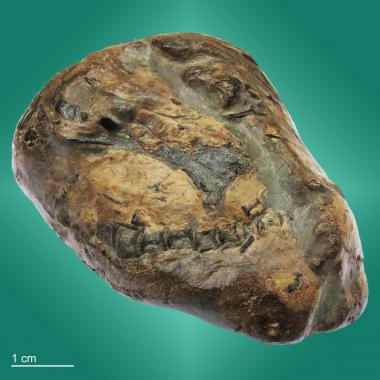
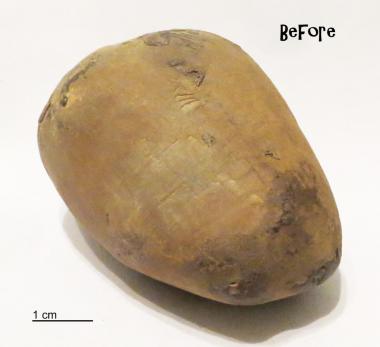
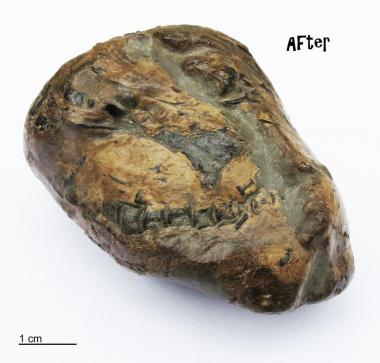
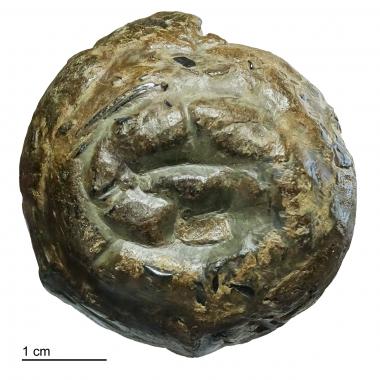
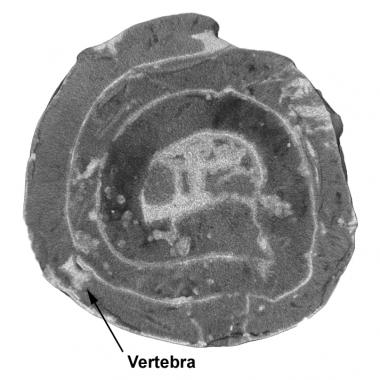
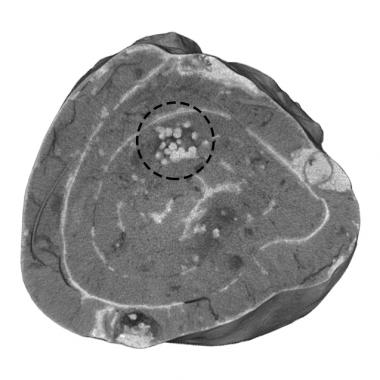
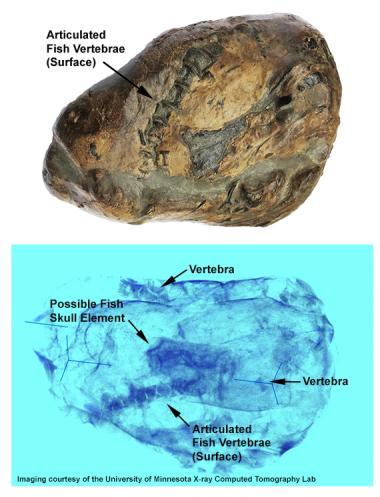
Found along the coastline, this spiral coprolite offered a lot of promise. It is was originally encased in hard concretionary material that was painstakingly removed under a microscope with an X-acto blade. Although the majority of the coprolite was encased in matrix, vertebra and fish scale inclusions were visible along the exposed edge. After approximately 90 hours of prep work, the majority of the matrix was removed, revealing a string of 8 articulated vertebrae.
The University of Minnesota X-ray CT Lab was kind enough to perform a CT scan of this coprolite. Because of its large size and density, it was hard to get a clear image of inclusions in the interior of the coprolite. That said, it does appear that there is a rather large bone in the center, possibly part of a fish skull.
For those of you that are unfamiliar with CT imagery, it is a series of x-rays performed at minute intervals through an object. They show us what would be seen if we were to slice through the object at various locations. These individual 2D images can be put together using software to provide a 3D image. The last two photos are examples of individual x-rays sections or "slices" revealing the internal spiral structure. Pretty cool, huh? In this instance, the bones are more dense than the rest of the coprolite. The higher the density, the lighter the color on the individual x-rays. The last photo is a 3D image of the more dense material.
